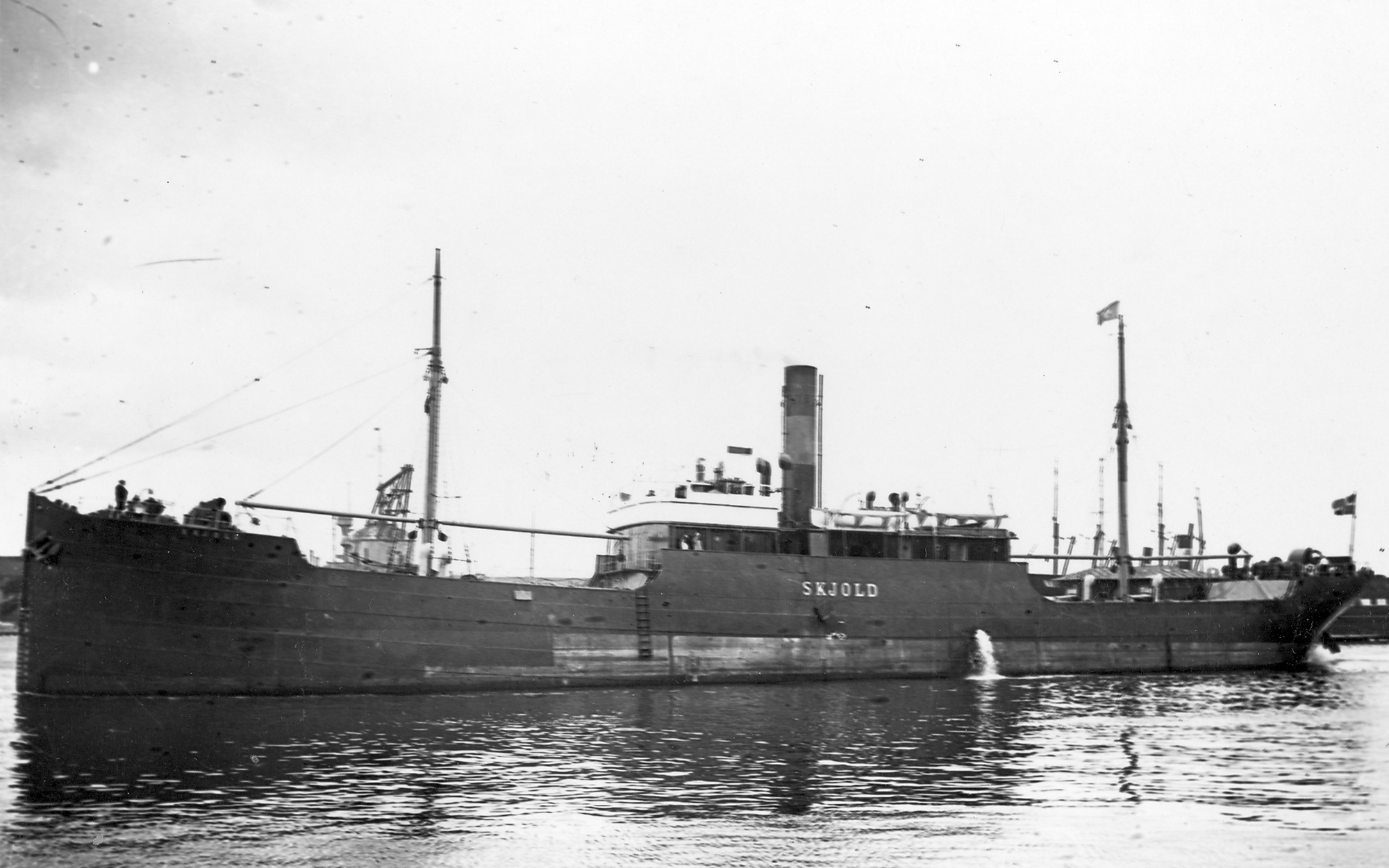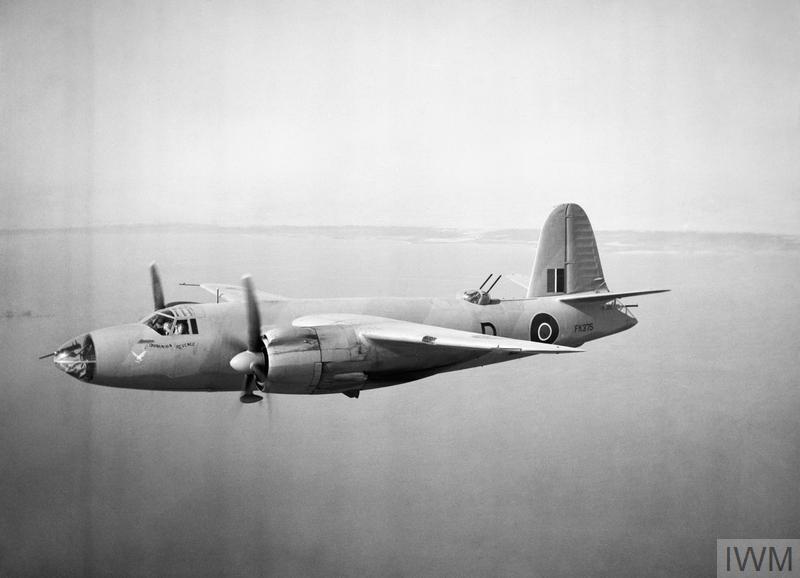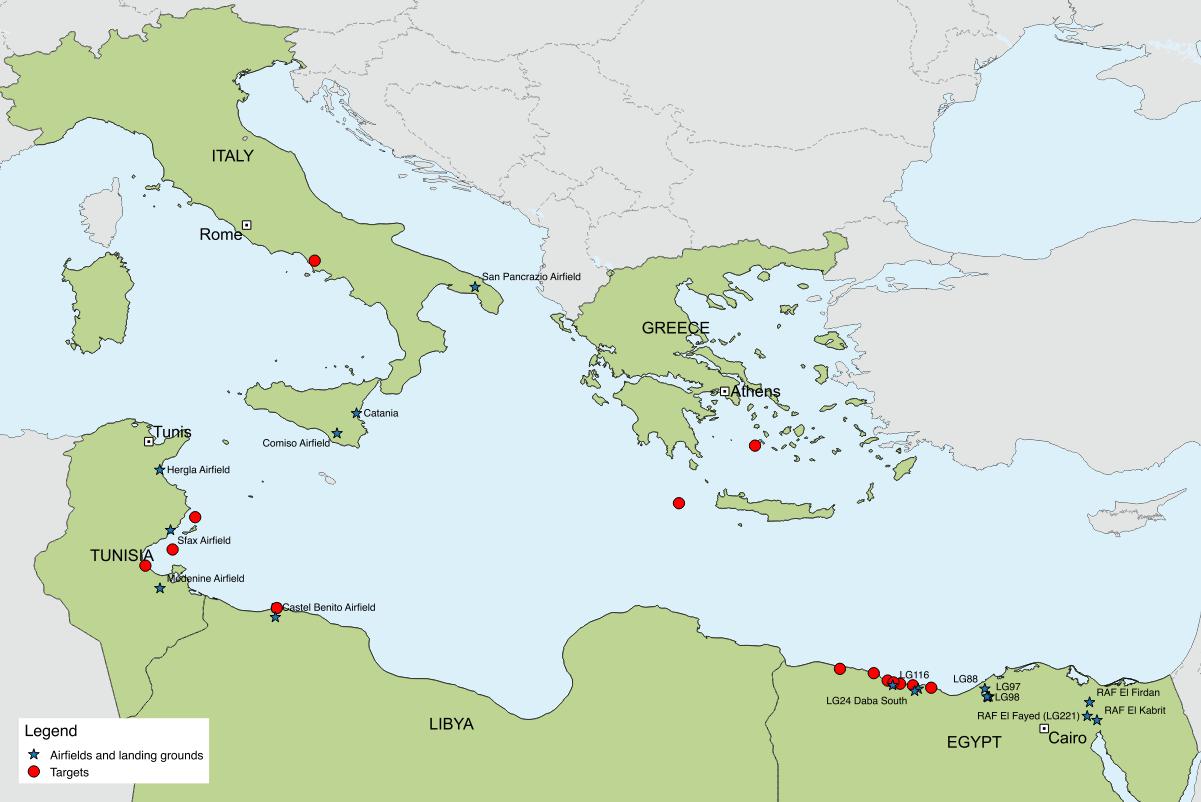2nd Ltt. Gunnar Christensen Egebjerg
(1917 - 1993)
Profile
Gunnar Christensen Egebjerg was the only Dane to serve in the Royal Air Force as well as in the U.S. Army Air Force during the Second World War. He was trained as pilot.
Gunnar Christensen Egebjerg was born on 21 June 1917 in Parlier, California, by Danish-American parents. His father had emigrated to the USA in 1901 and had become a citizen of this country in 1910. His mother had been naturalised in the USA by her marriage to Egebjerg’s father in 1915. The family returned to Denmark around 1920 and Egebjerg grew up near Svendborg. The family seems to have resumed Danish nationality during the years in Denmark.[1]

Egebjerg worked as a machine operator in the late 1930s, and later joined the Danish merchant navy as machinist. He was signed on SS Skjold, which left Denmark on 1 April 1940 bound for the British Isles. On 9 April 1940—the day of the German occupation of Denmark—the ship arrived in Manchester and, on 8 May, it was requisitioned by the British authorities. In mid-June, now in British service, SS Skjold sailed for Nantes in France. The voyage was eventless until the ship reached Saint-Nazaire. Then all hell broke loose and the convoy was attacked by German aircraft. Egebjerg later remembered a large troopship being attacked and sinking right before their eyes.[2] It is possible that the ship in question was HMT Lancastria, which was sunk on 17 June 1940 during the evacuating British nationals and troops from Saint-Nazaire (Operation Ariel) two weeks after the Dunkirk and Le Havre evacuations (Operation Dynamo and Operation Cycle respectively). Egebjerg returned to Plymouth on 21 June.[3]
At this point, Egebjerg decided that he wanted to fight the enemies of his home country and he volunteered for service. Egebjerg volunteered for the Royal Air Force and was trained as pilot. Little information is available on his training. He was educated in English in Cambridge for three months before commencing flying training.[4] In February 1942, he was stationed at RAF Bicester, presumably at 13 Operational Training Unit (OTU) or 1442 Ferry Training Flight (FTF).
Fighting Rommel in North Africa
Egebjerg was transferred to Egypt in March 1942. He arrived in North Africa at a time when the Axis forces were in the offensive. The squadron was not involved in operational missions at the time, but that was soon to change. On 26 May, the Axis forces launched the Battle of Gazala and, in the following weeks, the Allied forces were pushed back towards Egypt. Tobruk fell on the 21 June. The Battle of Mersa Matruh followed and, on the 30th, the first German units reached British defensive positions at El Alamein. The rapid German advance caused chaos at 14 Squadron, especially in the days following the fall of Tobruk. Moving orders were received, only to be cancelled or amended shortly afterwards. The squadron moved four times within five days towards the end of June.[5]
On 1 July 1942, Rommel’s Afrika Korps opened the First Battle of El Alamein. The following night, Egebjerg took off on his first operation. Before the end of the month he had completed another six operations. On 2–8 July, the Blenheims were involved in night attacks on enemy transport on the coastal road as well as enemy camps in the area. Two more operations followed on the 22nd and 24th, before the squadron was withdrawn from operations in early August.
Marauder Pilot
The squadron was based at Cairo West (LG224) for conversion to the Marauder Mk. I medium bomber.

Egebjerg took off on his first mission in this aircraft, a shipping recco west of Crete, on 7 November. At this point, the Eighth Army was in the offensive following the Second Battle of El Alamein. On 11 and 12 December, Egebjerg participated in operations around Tripoli and, on the 20th, the crew carried out an offensive shipping search along the Tunisian coast and the gulf of Gabes. During the latter operation, the aircraft was attacked by two Junker Ju 88s and a Messerschmitt Bf 110. Egebjerg’s tail gunner, Sgt D. Taylor, managed to shoot down the Bf 110, but was himself wounded in the shoulder and leg.
Egebjerg’s final operation in 14 Squadron was carried out two months later. On 21 February 1943, the squadron attacked the harbour and installations at Melos Bay in the Aegean Sea. The nine Marauders of which three carried torpedoes attacked the target in waves of three aircraft. Egebjerg was part of the third and final wave. Arriving at Melos Bay, two Marauders attacked the merchant vessel Artemis Pillay, resulting in one direct torpedo hit. The ship blew up and started to sink right away. The third torpedo missed its target, the Thisbe. The first wave of aircraft had taken the Germans by surprise but, as the second wave pulled up over the hills on the south of the bay, the anti-aircraft defences started firing. Two of the Marauders were shot down in flames. The third wave arrived from north surprising the Germans. Egebjerg flying in Marauder FK378/G succeeded in bombing the German depot at the Klonarides factory to the east of Adhamas.[6]

US 15th Army Air Force
Egebjerg left 14 Sqn shortly after the Melos Bay operation. He transferred to the USAAF, and served in the 489th Bomb Squadron, 340th Bomb Group flying thirty-six operations from North Africa and Italy. The reason for the trans has not been established, but the fact that Egebjerg was born in the United States made the transfer possible.
Egebjerg’s new squadron was established in 1942 and posted overseas arriving in Cairo (Heliopolis) in March 1943. In April 1943, the squadron moved to the battle area (Medine) and, on 4 June, the squadron proceeded to Hergla Airfield between Sousse and Enfidaville in Tunisia. At this point in time, the Axis troops in Tunisia had surrendered and the preparations for the next phase—the invasion of Sicily—were underway.
Since there are few details available on Egebjerg’s operations at this squadron, it is not possible to give but a summary description of his operations. It is most likely that he participated in the massive bombing of the Italian islands of Pantelleria and Lampedusa in June 1943 prior to the surrender of the islands on the 12th and 13th respectively.
The squadron moved to Comiso on Sicily in early August and, on 27 August, the squadron moved to Catania. The crews were quite satisfied with the new airfield: Catania, in several ways, proved a good location. The nearby town with Italian ice cream, young girls, and wine and “Spumante” was the nearest thing to civilization encountered overseas. The many hospitals in the area proved a boon because nurses could be invited to the clubs which sprang up in tents and in battered buildings. The nearby sea afforded swimming facilities, and the volcano, Mount Etna, provided a place for sight-seeing. A squadron orchestra was organized with Lts. Cutler, Bulkley, Demas, Gunner Egebjerg, and others playing the collection of instruments including a piano, guitar and bass fiddle. Captain Wagner, Lts. Demas and Cutler, and Sergeant Johnny Rovick provided the vocals. Not many of the squadron will forget those parties in the tent club.[7]
In September 1943, the squadron supported the Salerno landings (Operation Avalanche) which led to one of Egebjerg’s most dramatic operations. Shortly before midnight on 9 September, the squadron took off to attack the Grazzanise Landing Ground north of Naples. The operation was unsuccessful and worse, on the return flight, the Mitchell ran short of fuel unable to return to base. The crew agreed to attempt to ditch the aircraft. They succeeded in bringing the aircraft down on the sea along the coast, but they were not able to tell if they had landed in front of or behind enemy lines. Fortunately, they had landed close to the base of another bomb group and they returned to Catania the next day.
Endnotes
[1] Folketælling 1940, Egebjerg Hede, matrikel nr. 14 g.
[2] Sydfynsk Maskinarbejder engelsk og amerikansk Bombeflyver i 5 1/2 år, article in unidentified newspaper, 1945.
[3] NA: BT 389/27/124, Ship Name: Skjold Gross Tonnage: 1345 Country of Origin: Denmark.
[4] Sydfynsk Maskinarbejder engelsk og amerikansk Bombeflyver i 5 1/2 år, article in unidentified newspaper, 1945.
[5] Napier, Winged Crusaders (2012), pp. 234–240.
[6] Orange, Winged Promises (1996), pp. 190–192.
[7] Casper, History and personnel, 489th, 340th Bomb Group; combat campaigns participated in by the 489th Bomb Squadron (M) (1947).